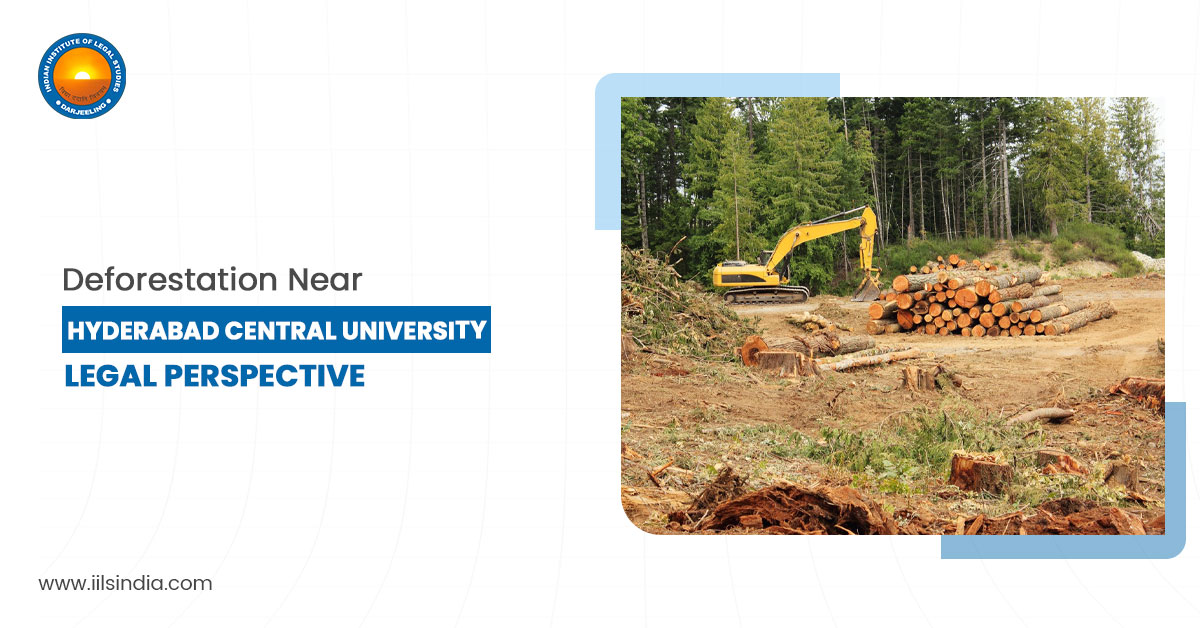Recently the forest areas of Hyderabad faced serious threats of destruction. Environmentalists together with local inhabitants showed increased concern regarding the deforestation of 400 acres of urban forest land in Kancha Gachibowli, near the Hyderabad Central University. This educational institution faced a challenging situation because urban growth continues to move towards their location. Progressive expansion has led to the demise of large number of trees which used to create peaceful academic environments at the university.
The Hyderabad deforestation case demonstrates why an environmentally sustainable legal structure should be the priority. Through this case the courts demonstrate their ability to function as environmental protectors during events that threaten ecological destruction from executive branch actions. Aspiring legal professionals who study at different institutions their LLB Course in West Bengal should understand how law functions as a bridge uniting legal activism with policy development and urban planning practices through this example.
The report made by TOI reveals that systematic destruction of forest remains a point of concern for environmental experts and local population. The article presented predictions about the environmental disaster that will result from deforestation including biodiversity destruction and soil loss and impact on local eco systems. Media coverage from The Times of India investigated the legal authorisation of permit releases for extensive tree removal. The article further investigated if clearance operations started before environmental organisations submitted their reports for approval. The report has analysed the process of environmental impact evaluations and confirmed if proper clearances from regulatory bodies were issued. The investigation pressed major concerns regarding modern interpretations of environmental protection rules and regulations. The report has explored different ways through which environmental laws such as the Forest Conservation Act and the Water, Land, and Trees Act (WALTA) together with its related statutes were potentially breached.
Matters surrounding this issue have led to discussions between policymakers who split into two camps about how to address this devastating situation. Few advocated for stronger environmental laws and regulations while others supported for thorough development alongside ecological preservation. Local community members conducted educational initiatives to aware the residents about ecological consequences that may arise from tree destruction. Legal experts evaluated the situation by explaining how complicated environmental legislation remains in India. The authors explained that though India maintains robust environmental protections for forests and green spaces these protections lack effective implementation and enforcement. The situation has emerged as a leading example in various discussions concerning better environmental administration and open urban planning choices. The incident embodies an important illustration of how urban development competes against environmental preservation throughout India’s fast-growing areas. The results of this situation have established important guidelines for future cases of its kind.
Environmental regulations and legal standards remain at risk due to the ongoing deforestation that affects the vicinity of Hyderabad Central University. Recent news coverage reports that both residents in the locality and environmental activists have directed their attention towards this specific issue. Removing green spaces from the environment triggers both biodiversity threats and possible infringements of active environmental protection legislation. Courts of authority need to respond urgently regarding this essential matter. The complete legal investigation of these deforestation actions must be done to determine if they break regulations so proper enforcement steps can stop further destruction. The public should maintain awareness of these issues to back efforts which guarantee the preservation of natural resources for upcoming generations.

